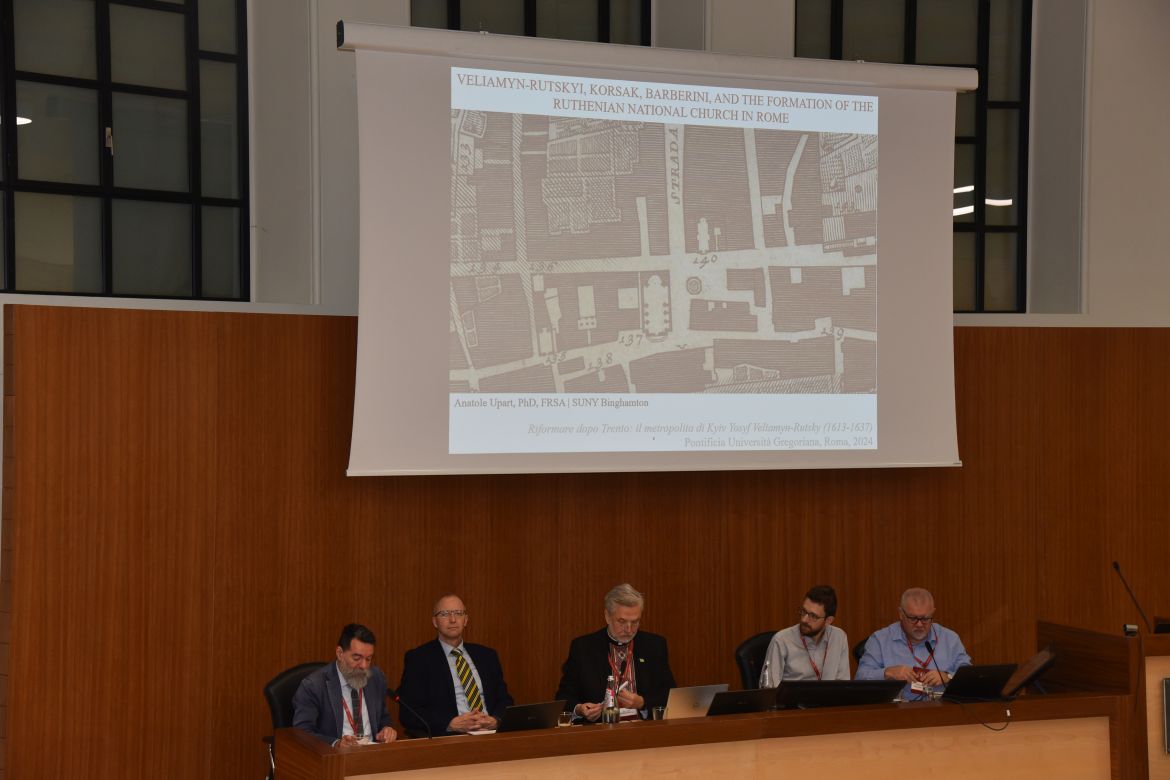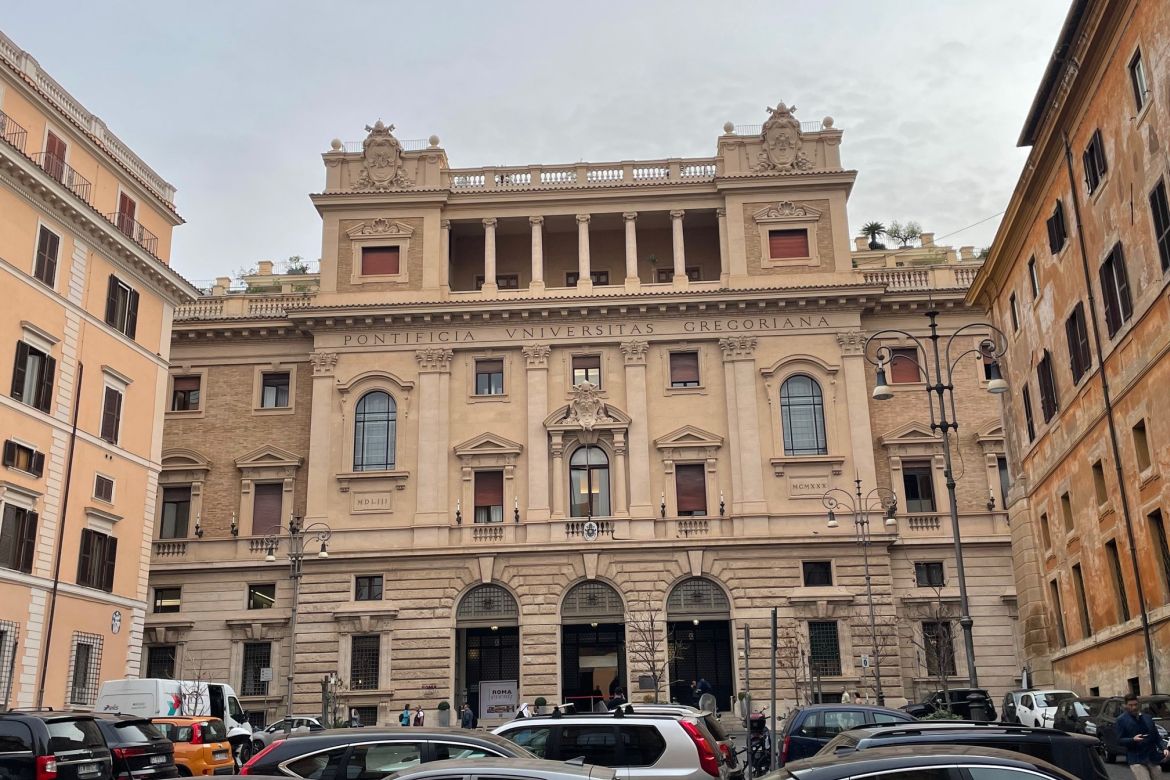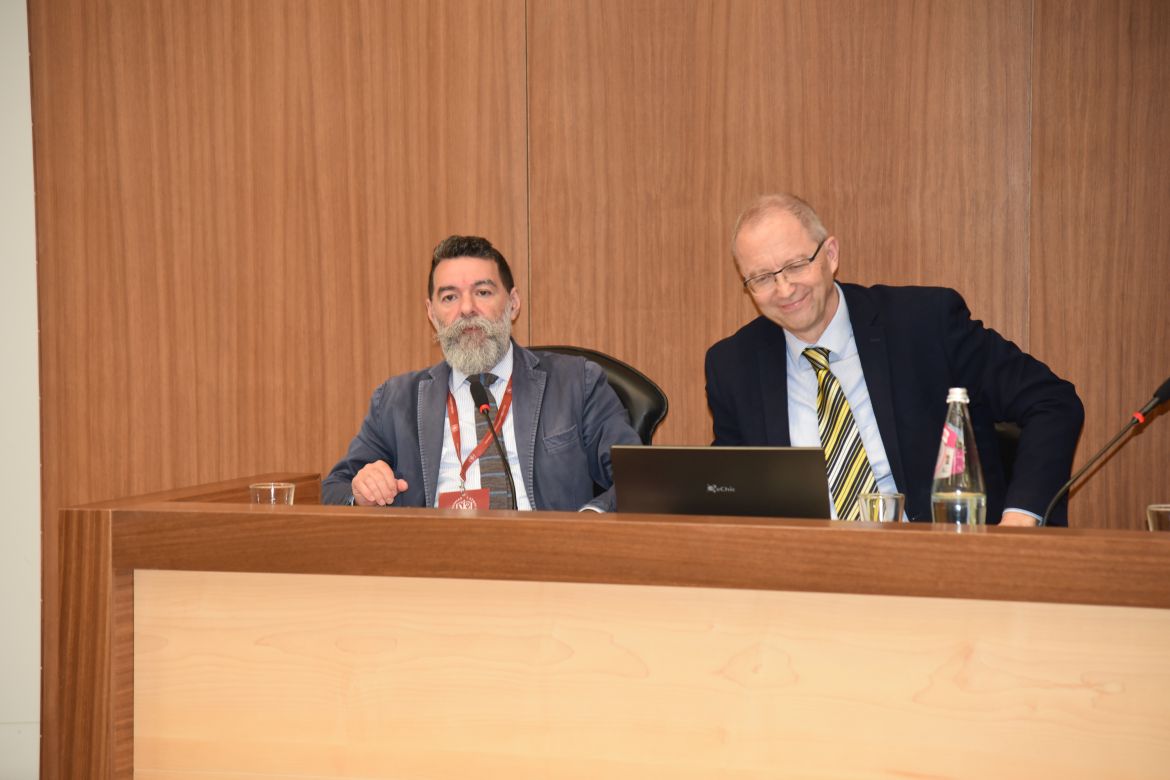A joint conference on the history of the Ukrainian Greek Catholic Church in the first half of the 17th century was held at the Pontifical Gregorian University in Rome on 16 and 17 October 2024. The conference was organised by the Pontificia Università Gregoriana, the Catholic University of America and the Ukrainian Catholic University.
The title of the conference was "Reforming after Trent: the Kyivan Metropolitan Yosyf Veliamyn-Rutsky (1613-1637)". Rutsky was born into a noble family of the Reformed faith and received catechesis from the Jesuits in Prague. He subsequently entered a monastery in Vilnius, adhering to the Byzantine rite. In 1613, he became metropolitan of the united Ruthenian Church in Kyiv. Over the course of his 22-year tenure, the Ruthenian Church made significant advancements, becoming a prominent denomination in the early modern period.
 Anatole Upart, Antal Molnár, Mark Morozowich, Melchior Jakubowski and Oleksandr Pronkevych. Photo: Giacomo Shumylo OSBM
Anatole Upart, Antal Molnár, Mark Morozowich, Melchior Jakubowski and Oleksandr Pronkevych. Photo: Giacomo Shumylo OSBM
The conference featured speakers from Italy, the United States, Ukraine, Poland, Lithuania, and Romania who explored key aspects of Rutsky's denominational work. Additionally, the event focused on the Roman presence of the Ruthenian basilicas in the area, including the Church of St. Sergius and Bacchus and the associated Basilite monastery. There were also presentations on the survival and cult of Rutsky's figure in the Ruthenian and later Ukrainian Greek Catholic Church.
 Pontificia Università Gregoriana. Photo by Antal Molnár
Pontificia Università Gregoriana. Photo by Antal Molnár
Antal Molnár, Deputy Director General of the HUN-REN Research Centre for the Humanities and Director of the Institute of History of the HUN-REN RCH, delivered a lecture on the role of the Ruthenian basilicas in the Balkan missions during the first half of the 17th century. This broader Southeast European aspect is particularly intriguing from the perspective of Ukrainian church history, as it allows the historical trajectory of the Ruthenian Church to transcend the confines of a regional narrative and assume a trans-regional significance. The Union of the Ruthenians in Brescia (1596) was the earliest and most successful union in early modern Eastern Europe. The Baroque papacy drew on this experience in its missionary activity among the Orthodox churches, seeking to emulate the achievements of the Ruthenian basilicas in Rome and the Balkan missions.
 Anatole Upart and Antal Molnár. Photo by Giacomo Shumylo OSBM
Anatole Upart and Antal Molnár. Photo by Giacomo Shumylo OSBM
Antal Molnár's lecture delineated the areas and phases of this cooperation, noting that the "Brest model" was not feasible under the dissimilar conditions of the Ottoman Empire. In contrast, within the Kingdom of Hungary and Transylvania under Habsburg rule, it provided Byzantine Christians with a compromised yet viable alternative for the preservation of their identity.
An interview with Antal Molnár regarding the conference was broadcast on Vatican Radio.



